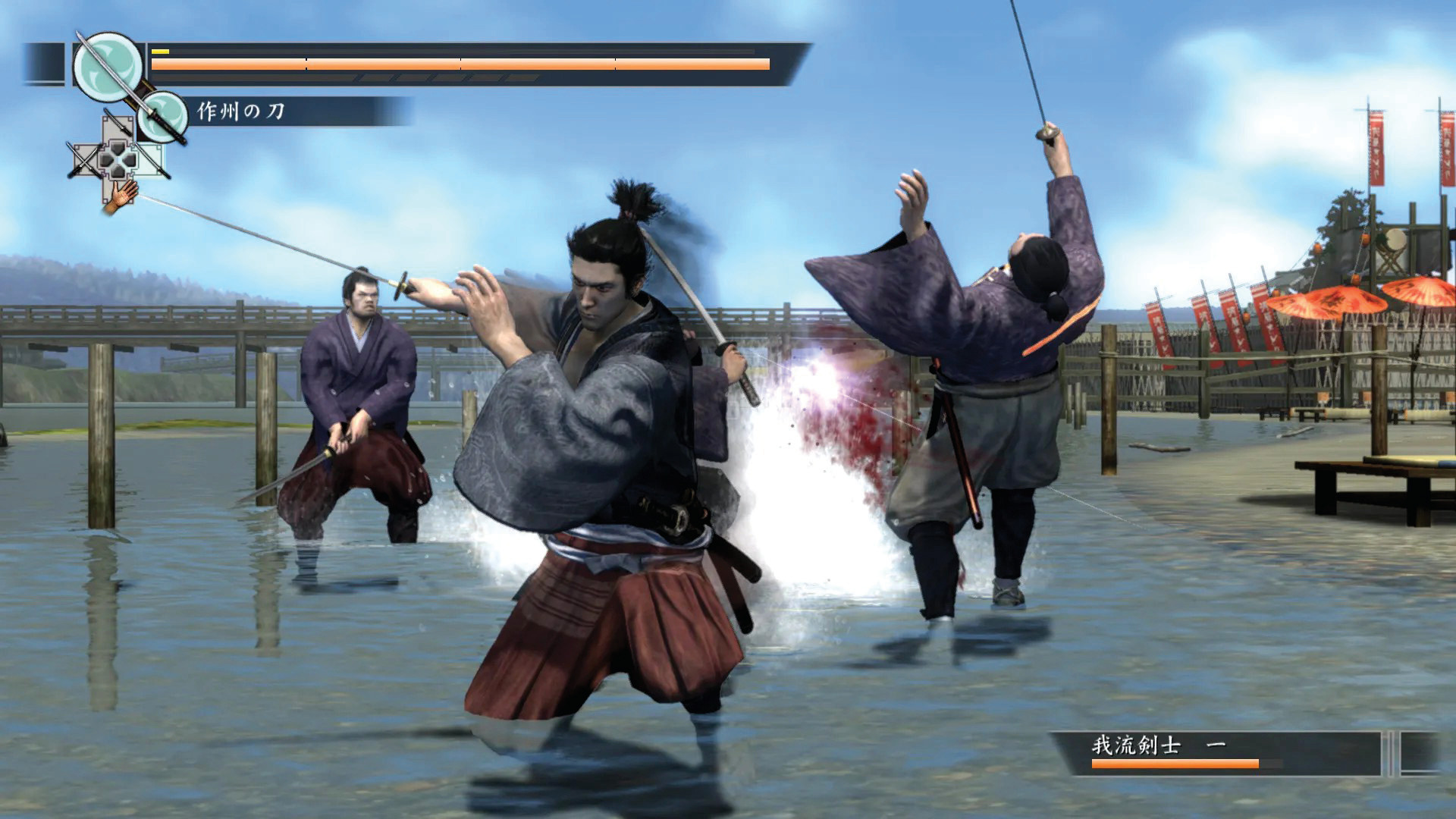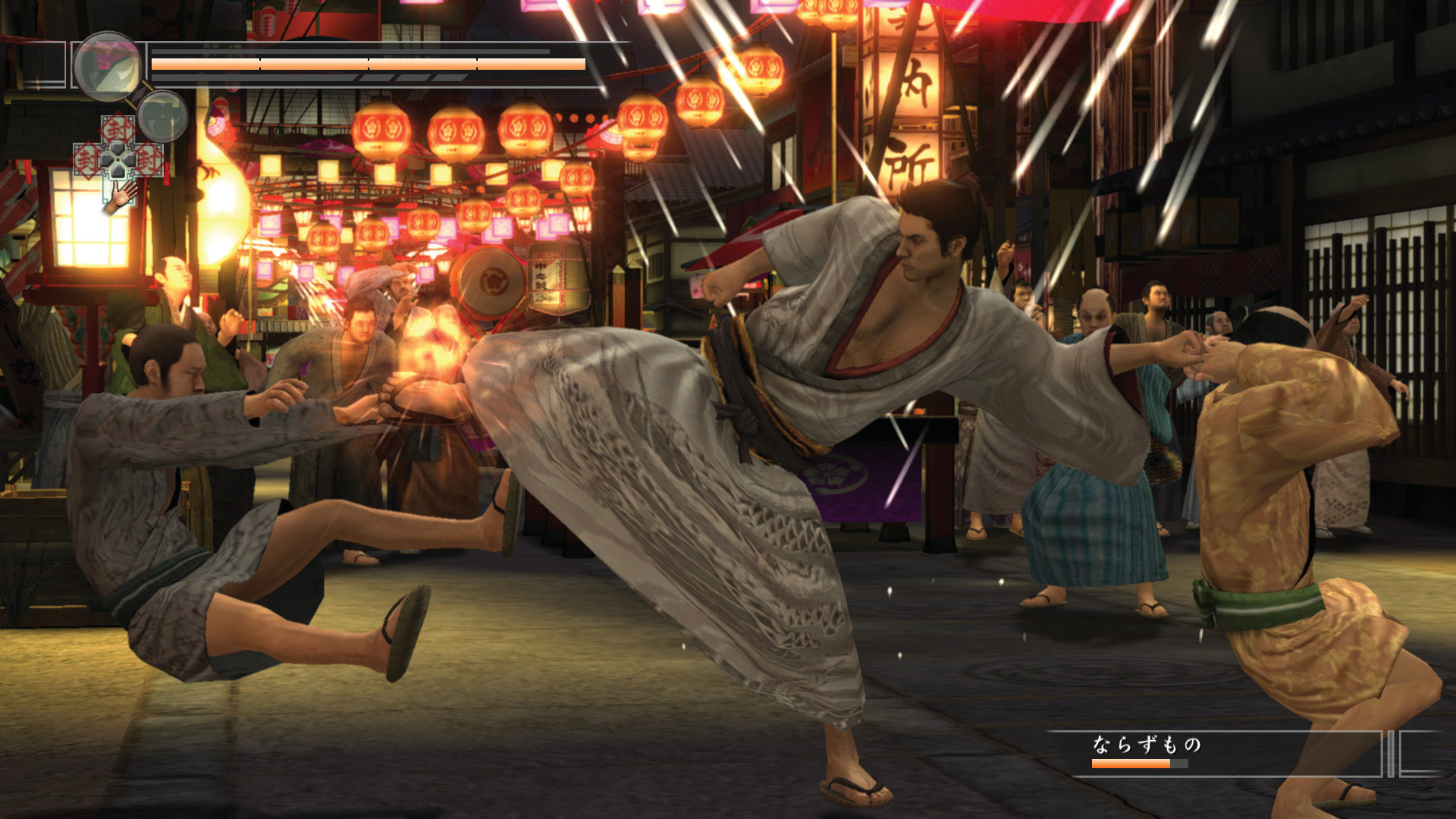After years of fans clamouring for it, Like A Dragon: Ishin! came to the West as a from-the-ground-up remake, but it’s not the first time the Yakuza characters have starred in a Japanese period drama. Ryu Ga Gotoku Kenzan (colloquially, Yakuza Kenzan) was the first in the series’ many spin-offs, but right now it’s only available as an import.
The game’s set in the early 1600s at the start of Japan’s Edo period, and you play as series regular Kazuma Kiryu – or rather someone who looks like him, and goes by the more archaic name of Kiryu Kazumanosuke. That’s just his alias; he’s actually Musashi Miyamoto, a legendary swordsman best known for his skill with double-bladed swords. Although Miyamoto’s a real historical figure, his reputation means many fictional stories have been written about him, and Kenzan! is just one of them.
It features fewer series characters recast in another role than Ishin!, but there are nonetheless recognisable faces along for this historical ride, including those of Majima and Haruka. Here, her face isn’t that of the hero’s adopted daughter, but of a girl who asks him to help her take revenge against the man who killed her parents, someone going by the name of… Musashi Miyamoto.
Going, going, Gion

There are a few notable differences from the contemporary mainline series. Tokyo wasn’t Japan’s capital at this time, so the story takes place in then-capital Kyoto, specifically the red-light district of Gion. Then there’s Kiryu’s combat style, which includes several blade styles that you can switch between and learn new moves for. You can also resort to old-fashioned fisticuffs if you wish. Still, when you’re running your blade through your opponents or using a Heat action where you gut a downed foe right in the chest to finish them off, it’s rather the opposite of the series’ usual ‘Batman’ approach where you brutalise but don’t kill.
Aside from that, Kenzan! is very much a typical Yakuza game, though its lengthy cutscenes look more cinematic on PS3 hardware. You follow a convoluted plot of dual identities and schemings (albeit with samurai, soldiers, and shogun rather than any yakuza) and run into random men in the street or countryside path spoiling for a fight. Similarly, off the critical path you’ve also got plenty of side-quests and minigames to distract you – they’re not nearly as thorough as in later instalments, though you’re in luck if you’re into simulated gambling.
Nonetheless, the locations are also more varied than Kamurocho regulars will be used do, with considerably more real estate to explore. Gion itself is split into two sections, the red-light district where the brothels and all the colourful glamour and hedonism is, plus Kiryu’s shack in the corner where he carries out odd jobs, and then the suburbs just beyond the main gate, although you have to sneak in and out via a basement door. There’s even a world map of sorts as new story locations appear, as you travel to dojos, fighting tournaments, or just a little shop by the riverbank selling dango.
Lost in translation

So if Sega is finally brought Ishin! to the West, the question might be why not Kenzan! too? The main issue is probably its depiction of the sex industry. Sure, seedy vibes are part and parcel of the series, but the story hits controversial territory as Haruka sells herself to Gion’s major brothel and uses the money to hire Kiryu. To be clear, kamuro were attendants to the courtesans working at these brothels, running errands and parading as part of their retinue. Becoming one often happened to young girls from poor families (though they’d inevitably become courtesans when they were of age). Even so, you can imagine it being too much of a hot potato for any localisation team.
That doesn’t mean it’s impossible to appreciate Kenzan!. PS3 is region-free and import copies are easy to source, and if you don’t know any Japanese, guides can be found on the internet or you can use the Google Translate app. However you access it, this is a slice of history worth taking in.
This article originally appeared in PLAY Magazine #23, the successor to Official PlayStation Magazine. If you want to get into more scraps and crime capers, check out our best Yakuza games ranking!



